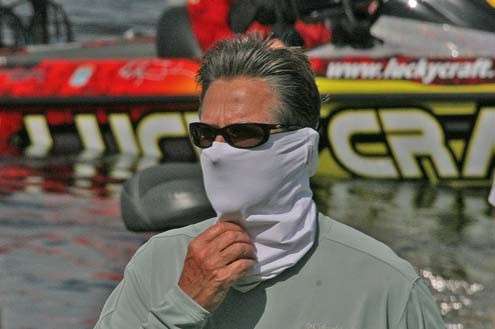
Last time I shared a personal experience with you — one that was perhaps a bit graphic. Hopefully no one was offended. My intent was to provide a wake-up call for those who haven’t yet grasped the seriousness of long-term UV exposure.
Fortunately, most of you are aware of the need for sunscreen and practice regular use. Simple application can help to avoid problems down the road. For some of us, however, taking preventive measures now doesn’t mean we’re safe — the damage may have been done long ago.
If you were like me, you spent your youth in the outdoors. Back then there wasn’t a whole lot to do indoors — no computers, cable TV, Xbox, Wii, etc. You either watched basic television, listened to music or read a book — none of which held my interest like the outdoors.
I fished, surfed, skied, swam and did any number of other activities outdoors, and with all that exposure I was basically running a tab — a tab that came due when I sought treatment with Dr. Chuck Stoer at Serenola Plantation.
If I had only known then what I know now….
Sunscreens That Work
According to the American Skin Cancer Foundation, more people have had skin cancer than all other cancers combined. In fact, one in five Americans will develop skin cancer over the course of his or her lifetime. Considering the added exposure the average angler receives, prevention is paramount.
While Dr. Stoer preaches the need for sunscreens, he insists not all are effective at filtering the sun’s harmful rays. He believes those with higher Sun Protection Factor (SPF) ratings will improve your odds, but he also emphasizes sunscreen type. Those that utilize titanium dioxide or zinc oxide as their active ingredients are better suited for long-term exposure.
Called “safe mineral sunscreens,” these have fine particles that block out harmful UVA and UVB rays. To be sure you’re getting maximum protection, avoid using sunscreens rated below SPF 30 or those void of these crucial inhibitors.
Applying sunscreen several times a day (or as needed) will also increase protection. Fishing in hot weather causes perspiration, which in turn removes the protective coating sunscreens provide. Keep yourself coated.
Even in the cooler months, sunscreen use is important. Considering the amount of reflected light an angler receives through the course of a day, exposure can double. Protect yourself!
SPF Clothing
Nowadays, certain clothing manufacturers offer products with SPF ratings. Simms, Columbia and Patagonia are among them. All have developed broad product lines suited for hardcore anglers experiencing intense, long-term exposure. Their products include shirts, shorts, pants, gloves and headgear.
If you follow competitive fishing at all, you’ve seen a number of tour anglers wearing these types of protective garments. It’s now commonplace … and that’s good, especially for the younger anglers who still have a chance of avoiding long-term damage.
Clothing styles may vary, but sun-protection garments all accomplish the same goal and that is protection from UVA and UVB exposure.
I like Simms’ COR3 line-up of technical apparel. Besides being UV protective, their Solarflex styles are extremely lightweight and comfortable. They also wick away moisture to keep you cool. I wear them like a uniform … not just on the water, but everywhere!
Regardless of your sense of style or the amount of time you spend on the water, protect yourself. Using the right type of sunscreen and wearing UV protective clothing just makes sense. After all, you don’t want to end up looking like me!







